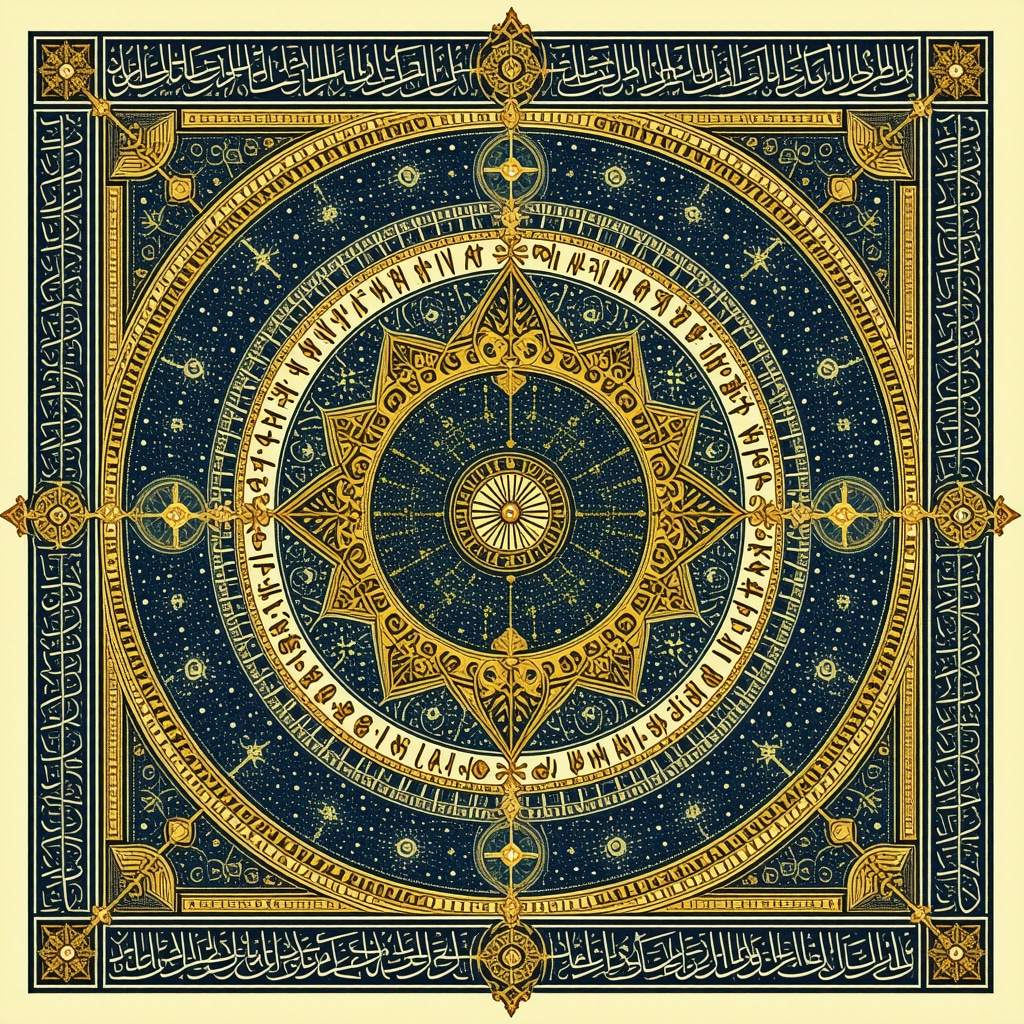Interpreting the Symbolism of “Misa u” in Islamic Dream Traditions
Dreams occupy a profound space in Islamic spirituality, often viewed as gateways to divine messages or subconscious reflections. Among various symbols, the term “Misa u”—though not universally defined—requires nuanced understanding within Islamic dream interpretation frameworks. This article explores the multifaceted meanings of dreaming of “Misa u,” contextualizing it within Islamic theological and cultural paradigms to provide a detailed, expert-level guide.
Contextualizing “Misa u”: Linguistic and Cultural Layers in Dream Interpretation
Before delving into the spiritual symbolism, it’s essential to clarify the linguistic roots and cultural connotations of “Misa u.” In some dialects or transliterations, “Misa u” could relate to concepts of measurement, balance, or even specific ritualistic references. Islamic dream scholars emphasize the importance of personal context—the dreamer’s environment, emotional state, and spiritual condition—when decoding such terms. Therefore, understanding “Misa u” demands an interdisciplinary approach combining Arabic linguistics, Islamic jurisprudence, and Sufi symbolic traditions.
How Does Islamic Scholarship Interpret Ambiguous Dream Symbols Like “Misa u”?
Islamic dream interpretation (ta’bir al-ru’ya) relies heavily on classical sources such as Ibn Sirin’s works, which categorize symbols into auspicious and cautionary signs. Ambiguous terms like “Misa u” challenge interpreters to consider analogical reasoning (qiyas) and the dreamer’s life circumstances. For instance, if “Misa u” is perceived as a symbol of measurement, it may denote judgment, accountability, or the weighing of deeds, resonating with Quranic themes like the Mizan (balance). Alternatively, it might symbolize the need for balance in personal affairs or spiritual equilibrium.
Spiritual Dimensions: “Misa u” as a Metaphor for Accountability and Divine Justice
Within Islamic eschatology, dreams that evoke measurement or scales often allude to the Day of Judgment or personal introspection. Dreaming of “Misa u” could metaphorically represent Allah’s justice, urging the dreamer to assess their moral conduct. Such interpretations underscore the didactic role of dreams in Islamic spirituality, serving as reminders for self-purification (tazkiyah) and adherence to Shariah principles.
Psychological and Mystical Perspectives on “Misa u” in Dreams
Beyond literal meanings, Islamic mysticism (Tasawwuf) interprets dreams as reflections of the soul’s state. “Misa u,” if linked to balance or measure, may signify an inner call towards harmony between nafs (ego) and ruh (spirit). This aligns with Sufi teachings about the purification process and the journey towards Ihsan (excellence in faith). Dreams thus function as symbolic narratives guiding the seeker towards spiritual maturity.
Integrating “Misa u” Dream Interpretations with Broader Islamic Dream Symbolism
To enrich understanding, one might cross-reference interpretations of other related dream symbols. For example, exploring the symbolism of dreaming of a mosque or dreams of pregnancy reveals themes of spiritual growth and new beginnings, which may interplay with the concept of “Misa u.” Similarly, examining the interpretation of water in the house could provide additional layers concerning purification and emotional states.
What Practical Steps Should Dreamers Take After Experiencing a “Misa u” Dream in Islam?
Given the symbolic richness and potential ambiguity, Islamic scholars advise dreamers to engage in reflective practices post-dream. This includes supplication (dua), seeking knowledge from trusted religious authorities, and self-assessment aligned with Islamic ethical standards. Documenting the dream details and consulting classical and contemporary Islamic dream dictionaries can aid in contextualizing the message. Engaging with community scholars or Sufi mentors might also provide personalized insights, especially when the dream bears spiritual complexity.
For readers eager to deepen their understanding of Islamic dream interpretations, exploring comprehensive resources such as the Islamic Dream Dictionary on Wealth and Prosperity or the Symbolism of Snakes in Islamic Dreams can offer broader semantic associations and expert interpretations.
For authoritative scholarly perspectives, readers may consult the works of Ibn Sirin, widely regarded as a foundational figure in Islamic oneirology, as documented in academic analyses such as “Dream Interpretation in Islamic Culture” by Fatima Mernissi (Journal of Islamic Studies, 2004).
Explore more expert-level analyses and share your own insights on Islamic dream interpretations by visiting our contact page.
Exploring the Multifaceted Symbolism of “Misa u” in Islamic Oneirology
Building on the foundational interpretations of “Misa u” as a symbol of measurement and balance, it is vital to explore how this motif interacts with broader Islamic cosmology and ethical frameworks. In classical Islamic thought, the concept of measurement transcends the physical realm to encompass moral and spiritual dimensions. “Misa u” in dreams may represent an intricate interplay between divine justice and human accountability, inviting the dreamer to engage in a profound self-evaluation that aligns with Shariah values.
Contextual Nuances: How Does the Dreamer’s Personal State Influence “Misa u” Dream Interpretations?
Islamic dream interpretation does not operate in a vacuum but is deeply embedded in the dreamer’s lived reality, including their spiritual, emotional, and social contexts. For instance, a dream involving “Misa u” during times of personal crisis may emphasize the need for balance and restoration, whereas in periods of spiritual growth, it could signal divine encouragement to maintain ethical rigor. These nuances underscore the dynamic nature of ta’bir al-ru’ya and the importance of individualized interpretation.
Could “Misa u” Symbolize a Call to Harmonize Inner and Outer Worlds in Islamic Dream Traditions?
Considering the layered meanings of “Misa u,” one can hypothesize that this dream symbol reflects the Islamic ideal of harmonizing the nafs (self) with the ruh (spirit) and external actions. Does the dreamer perceive incongruity between their internal faith and outward behavior? Islamic mysticism often highlights dreams as conduits for spiritual reconciliation and transformation, suggesting that “Misa u” might be an emblematic invitation towards achieving this equilibrium.
For further scholarly context, Fatima Mernissi’s analysis in “Dream Interpretation in Islamic Culture” emphasizes such integrative approaches, illustrating the complexity of dream symbols within socio-religious matrices (Journal of Islamic Studies, 2004).
Practical Frameworks for Engaging with “Misa u” Dreams: From Reflection to Action
To translate the symbolic richness of “Misa u” into tangible spiritual progress, dreamers are advised to adopt a structured approach: begin with sincere dua (supplication) seeking clarity, consult trusted Islamic scholars for contextual interpretation, and perform self-assessments focusing on justice, balance, and ethical conduct. Integrating these steps with daily acts of worship and community service can actualize the dream’s guidance.
Interlinking “Misa u” with Complementary Islamic Dream Symbols for Holistic Interpretation
Exploring interconnected symbols enriches interpretation. For example, the symbolism of dreaming of a mosque often conveys spiritual sanctuary and communal identity, which may complement “Misa u”’s message of balance. Similarly, investigating dreams about pregnancy can highlight themes of potential and new beginnings, aligning with the transformative aspects of measurement and accountability.
By synthesizing these symbols, dreamers can cultivate a nuanced spiritual map that guides ethical and personal development.
Expert Perspectives: Bridging Classical and Contemporary Islamic Dream Interpretations
Contemporary Islamic scholars continue to build upon classical foundations, emphasizing contextual sensitivity and psychological insight in dream analysis. The work of Ibn Sirin remains pivotal, yet modern interpretations advocate for integrating personal and societal dimensions, recognizing dreams as dynamic spiritual dialogues rather than static predictions. This evolution reflects a holistic understanding that honors both tradition and present-day realities.
Engage with our community by sharing your experiences or questions regarding “Misa u” and related Islamic dream symbols. Your insights contribute to a richer collective understanding and spiritual growth.
Unpacking the Esoteric Depths: “Misa u” as a Nexus of Divine Measurement and Human Ethical Dilemmas in Dreams
Delving deeper into the symbolism of “Misa u,” we encounter a convergence of divine justice paradigms and the human existential quest for equilibrium. In Islamic esoteric thought, the motif of measurement transcends mere physical quantification, evolving into an allegory for the intricate balance of ethical responsibilities, spiritual intentions, and worldly actions. This layered understanding suggests that dreaming of “Misa u” functions as a profound inner summons to reconcile competing facets of one’s moral compass, thereby facilitating transformative self-accountability.
Such interpretation aligns with the Quranic emphasis on the Mizan — the cosmic scale that not only weighs deeds but also symbolizes the inherent equilibrium Allah commands within creation (Quran 55:7-9). The dream, therefore, might be a subtle articulation of this divine injunction, inviting the dreamer to actively participate in maintaining justice and balance across personal and communal spheres.
How Can Dreamers Decode and Apply “Misa u” Symbolism to Address Complex Ethical Conflicts in Their Lives?
Interpreting “Misa u” as a dream symbol demands a multifaceted approach, especially when confronting ethical dilemmas that lack straightforward resolutions. Experts recommend contextualizing the dream within the dreamer’s life complexities, including social roles, spiritual commitments, and psychological states. For example, a dreamer grappling with conflicting duties might perceive “Misa u” as an encouragement to weigh priorities meticulously, seeking harmony rather than compromise.
Practically, this entails adopting reflective exercises such as journaling ethical conflicts while invoking istikhara (guidance prayer) to discern paths aligned with Islamic virtues. Consulting with knowledgeable scholars or counselors versed in Islamic ethics can also illuminate nuanced interpretations, helping to transform dream insights into actionable wisdom.
Integrative Models: Bridging Classical Islamic Oneirology with Contemporary Psychological Frameworks
Modern Islamic scholarship increasingly advocates for an integrative approach that synthesizes classical dream interpretation methodologies with advances in psychology and cognitive sciences. The symbolism of “Misa u” exemplifies this potential synergy, where traditional ta’bir al-ru’ya intersects with psychological constructs of internal balance, moral reasoning, and self-regulation.
For instance, the dream’s emphasis on measurement resonates with cognitive-behavioral concepts of weighing pros and cons, internal moral dialogues, and emotional regulation mechanisms. This interdisciplinary perspective enriches the interpretive process, offering dreamers not only spiritual insights but also pragmatic tools to navigate internal conflicts and external challenges.
Scholars such as Dr. Aisha Hamid, in her study published in the Journal of Islamic Psychology (2022), argue that incorporating psychological frameworks can deepen the efficacy of dream interpretation in fostering holistic well-being and ethical development within Muslim communities.
Advanced Reflective Practices: Transforming “Misa u” Dream Messages into Sustained Spiritual Growth
To operationalize the symbolic guidance of “Misa u,” dreamers can engage in advanced spiritual disciplines that foster ongoing self-assessment and ethical refinement. Techniques include:
- Structured Self-Muhasaba: Systematic self-accounting inspired by the dream’s theme, focusing on daily actions and intentions in light of Islamic ethical standards.
- Muraqaba Meditation: Sufi contemplative practice encouraging mindfulness of the heart’s balance and alignment with divine will.
- Community Accountability Circles: Participating in trusted groups that provide mutual support and constructive feedback, reinforcing justice and balance in social conduct.
These practices transform the dream’s ephemeral symbolism into concrete pathways for spiritual and ethical evolution, resonating with the prophetic tradition of continuous self-improvement.
Exploring the Intersection of “Misa u” with Complementary Dream Symbols in Islamic Esotericism
Interpreting “Misa u” gains richness when examined alongside interconnected Islamic dream motifs. For example, dreaming of a mosque often signifies spiritual refuge and communal belonging, which may contextualize “Misa u” as a call for balance not only within the self but also within one’s engagement with the Muslim community.
Similarly, dreams of pregnancy symbolize emergence and potential, complementing the measurement symbolism by highlighting the gestation of new spiritual or ethical insights.
By synthesizing these symbols, dreamers can construct a nuanced interpretive framework that acknowledges the dynamic interplay between personal spirituality, communal identity, and ethical responsibility.

Utilizing Digital and Scholarly Resources for Deepening “Misa u” Dream Interpretations
In the digital age, accessing authoritative Islamic dream interpretation resources facilitates a more comprehensive understanding of complex symbols like “Misa u.” Platforms such as the Islamic Dream Dictionary on Wealth and Prosperity offer extensive semantic fields that can contextualize measurement-related dreams within broader themes of spiritual and material balance.
Furthermore, engaging with contemporary scholarly articles and classical texts—such as Ibn Sirin’s treatises analyzed in academic journals—enables dreamers and researchers to appreciate the evolution of dream symbolism across centuries.
As you immerse yourself in these rich interpretive traditions, consider documenting your dreams and reflections to contribute to ongoing scholarly and communal dialogues.
What Are the Challenges and Opportunities in Modernizing Islamic Dream Interpretation for Symbols Like “Misa u”?
The modernization of Islamic dream interpretation presents challenges including maintaining fidelity to classical sources while embracing contemporary psychological insights. Symbols like “Misa u” exemplify this tension: their multilayered meanings require interpreters to balance textual authority with individual contextualization.
Opportunities arise from interdisciplinary collaboration, digital knowledge dissemination, and personalized spiritual counseling, which together can enhance the relevance and accessibility of dream interpretations for today’s diverse Muslim populations.
To engage further, share your personal experiences or questions regarding “Misa u” and related dream symbols with our expert panel via our contact page. Your contributions enrich this evolving field of Islamic oneirology.
Transcending Literalism: ‘Misa u’ as a Symbol of Divine Proportion and Ethical Calibration
Expanding upon prior explorations, the symbol “Misa u” in Islamic dream traditions invites contemplation beyond mere measurement into realms of divine proportion (qadar) and ethical calibration. This concept resonates with the Qur’anic notion of balance not only in deeds but also in intentions and societal interactions. Dreamers encountering “Misa u” may be prompted to evaluate how their actions align with the cosmic order ordained by Allah, emphasizing the need for equitable justice both internally and externally.
Interdisciplinary Insights: Integrating Classical Tafsir and Contemporary Ethical Philosophy
Bridging classical Islamic hermeneutics with modern ethical philosophy enriches understanding of “Misa u”. Scholars suggest that the symbol encapsulates a dynamic equilibrium, reflecting Immanuel Kant’s notion of practical reason harmonized with Islamic maqasid al-shariah (objectives of Islamic law). This synthesis illuminates how dream symbolism can guide ethical decision-making processes, especially in complex social contexts where moral dilemmas arise.
How Can Advanced Islamic Dream Interpretation Techniques Clarify the Multifaceted Implications of “Misa u”?
Experts recommend employing a layered hermeneutic approach combining linguistic analysis, contextual life circumstances, and spiritual states. This methodology includes:
- Semantic Deconstruction: Parsing the term “Misa u” within classical Arabic lexicons to uncover roots and derivatives.
- Contextual Correlation: Aligning dream content with the dreamer’s personal and societal challenges.
- Spiritual Resonance: Reflecting on the dream’s call towards tazkiyah (purification) and ihsan (excellence).
Such comprehensive interpretative frameworks align with the scholarly guidance found in authoritative sources like Ibn Sirin’s dream manuals and contemporary academic discourse.
Psychospiritual Dynamics: Navigating Inner Ethical Conflict Through Dream Symbolism
From a psychospiritual vantage, “Misa u” may function as an internal barometer signaling dissonance between values and actions. This aligns with the Quranic exhortation to self-accountability (muhasaba) and the prophetic emphasis on continuous moral vigilance. Dreamers are thus encouraged to engage in informed self-reflection, possibly assisted by spiritual mentorship, to reconcile these tensions and foster holistic integrity.
Leveraging Digital Scholarly Resources for Enhanced Interpretative Accuracy
Utilizing specialized digital platforms such as the Al-Maktaba Al-Shamela digital library can significantly augment the interpretative process. These repositories provide access to classical tafsir, hadith compilations, and contemporary commentaries, facilitating nuanced cross-referencing essential for decoding complex symbols like “Misa u.” Moreover, engaging with peer-reviewed journals such as the Journal of Islamic Ethics offers cutting-edge perspectives that integrate traditional exegesis with modern ethical challenges.
Activating Dream Insights: Practical Steps to Incorporate “Misa u”‘s Ethical Guidance
To effectively translate the dream’s symbolic imperatives into lived ethical praxis, dreamers might consider implementing the following:
- Deliberate Self-Muhasaba: Structured journaling focusing on alignment of intentions and actions.
- Guided Istikhara: Seeking divine direction through prayer when facing moral uncertainties.
- Ethical Dialogue: Consulting with knowledgeable scholars or ethical counselors to contextualize the dream’s message within contemporary challenges.
Embedding these practices within community engagement fosters not only personal growth but also collective ethical coherence.
Cross-Symbolic Synthesis: Enriching “Misa u” Interpretations Through Complementary Islamic Dream Motifs
Integrative analysis of “Misa u” alongside symbols such as the mosque and pregnancy reveals a thematic nexus of spiritual foundation, balance, and emergent potential. This composite symbolism offers a multidimensional roadmap for dreamers navigating spiritual and ethical evolution, underscoring the interconnectedness of personal faith and communal responsibility.

What Emerging Trends Are Shaping the Future of Islamic Dream Interpretation for Symbols Like “Misa u”?
Contemporary trends include increased interdisciplinary research combining Islamic theology, psychology, and digital humanities. There is a growing emphasis on personalized, context-sensitive interpretations facilitated by AI-assisted platforms that respect traditional scholarship while accommodating individual nuances. These developments promise to democratize access and enhance the precision of dream analysis, making symbols like “Misa u” more accessible and relevant to diverse Muslim experiences.
For further engagement with these advanced perspectives, consider connecting with our expert community through the contact page. Share your own dream experiences or scholarly inquiries to contribute to this evolving field of Islamic oneirology.
Expert Insights & Advanced Considerations
1. “Misa u” as a Symbol of Dynamic Ethical Equilibrium
The motif of “Misa u” in Islamic oneirology transcends a simplistic notion of measurement, embodying a dynamic ethical equilibrium that aligns with Quranic principles of justice and balance. Dreamers encountering this symbol are invited to actively engage in self-assessment that harmonizes internal intentions with external actions, reflecting the holistic approach emphasized in Islamic jurisprudence and spirituality.
2. Contextual Sensitivity in Decoding Ambiguous Dream Symbols
Interpreting “Misa u” requires nuanced consideration of the dreamer’s socio-spiritual context. Islamic scholars advocate for layered hermeneutics combining linguistic analysis, personal circumstances, and spiritual states. This approach ensures that the interpretation remains flexible and meaningful, acknowledging individual differences and the fluidity of spiritual symbolism.
3. Integrative Frameworks Bridging Classical and Contemporary Disciplines
Emerging scholarship highlights the value of integrating classical ta’bir al-ru’ya with contemporary psychological and ethical frameworks. The symbolism of “Misa u” resonates with cognitive processes of moral reasoning and emotional regulation, enabling dreamers to translate spiritual insights into pragmatic ethical decision-making and personal development.
4. Activating Dream Messages Through Structured Reflective Practices
To transform the profound symbolism of “Misa u” into sustained spiritual growth, dreamers are encouraged to engage in advanced reflective disciplines such as structured muhasaba (self-accounting), muraqaba (contemplative meditation), and community accountability. These practices embody prophetic traditions of continuous self-improvement and foster tangible ethical refinement.
5. Cross-Symbolic Synthesis Enhances Interpretive Depth
Exploring “Misa u” alongside complementary Islamic dream symbols like mosques and pregnancy enriches interpretive frameworks by revealing interconnected themes of spiritual foundation, balance, and emergent potential. This synthesis facilitates a multidimensional understanding conducive to navigating personal and communal spiritual evolution.
Curated Expert Resources
Ibn Sirin’s Dream Interpretation Manuals: Foundational classical texts that provide systematic categorization of dream symbols, essential for understanding traditional Islamic perspectives on symbols like “Misa u.”
“Dream Interpretation in Islamic Culture” by Fatima Mernissi (Journal of Islamic Studies, 2004): This scholarly analysis offers critical insights into the socio-religious matrices shaping Islamic dream symbolism, highlighting integrative approaches relevant for ambiguous symbols.
Journal of Islamic Psychology: Particularly articles by scholars like Dr. Aisha Hamid, which explore intersections of Islamic spirituality and contemporary psychological theories, enriching the interpretive process.
Al-Maktaba Al-Shamela Digital Library: A comprehensive digital repository of classical tafsir, hadith, and dream literature that supports nuanced cross-referencing for advanced dream analysis.
Islamic Dream Dictionaries on Wealth and Prosperity and Symbolism of Snakes: Accessible resources to contextualize related dream motifs, providing broader semantic fields that complement understanding of “Misa u.”
Final Expert Perspective
The symbolism of “Misa u” in Islamic dream traditions serves as a profound nexus of divine justice, ethical calibration, and spiritual introspection. Its interpretive richness lies in the dynamic interplay between classical scholarship and contemporary psychological insights, emphasizing the need for contextualized, reflective engagement. Dreamers encountering “Misa u” are thus invited to embark on a transformative journey of self-accountability and ethical refinement that mirrors the Quranic injunctions of balance and justice.
For those seeking to deepen their expertise and engage with a vibrant community of scholars and practitioners, we encourage exploring advanced resources and sharing your nuanced insights on our contact page. Your contributions enrich the evolving discourse on Islamic oneirology and facilitate collective spiritual growth.
To further broaden your understanding, consider investigating related dream interpretations such as dreams of pregnancy in Islam and Islamic dream symbolism of wealth and prosperity, which complement the themes inherent in “Misa u.”


The concept of “Misa u” in Islamic dream interpretation is truly captivating, especially considering its symbolic connection to divine justice and personal accountability. What intrigued me most is the rich interdisciplinary approach recommended here—combining linguistic roots, jurisprudence, and Sufi mysticism—to grasp its full meaning. I’ve always respected dreams as tools for spiritual introspection, and this article deepens that appreciation by highlighting how “Misa u” can signal an inner call to harmonize one’s actions with faith. The link to the Quranic “Mizan” (balance) resonates profoundly, reminding us that dreams aren’t isolated experiences but reflect ongoing ethical and spiritual journeys. Personally, I’ve found journaling post-dream reflections paired with dua to be a grounding practice, helping me align intentions with daily behavior. I’m curious, though: for those who have experienced dreams symbolizing measurement or balance, how do you practically integrate such insights into your life? Do you lean more toward individual reflection, or do you find discussing with community mentors or scholars more beneficial in decoding and applying these ethereal messages? It would be enriching to hear diverse experiences on translating these complex symbols into meaningful action within the Islamic framework.
Fatima, you raised an important question about balancing personal reflection with community engagement when interpreting dreams like those involving “Misa u.” From my experience, both approaches complement each other deeply. Individual reflection allows for honest self-assessment and tuning into one’s spiritual state, especially through journaling and dua as you mentioned. This internal work helps internalize the dream’s message and fosters personal growth. However, discussing the dream with knowledgeable scholars or community mentors adds invaluable perspective, especially in grasping nuanced symbolic meanings rooted in classical Islamic jurisprudence and Sufi insights. It also encourages accountability and shared learning, which are essential in Islamic ethics.
Moreover, the symbolic nature of “Misa u” as a metaphor for divine justice and balance often reflects complex ethical dilemmas. Engaging others can provide clarity on how to navigate these challenges in practical terms within our societal context. I wonder if there are ways modern digital platforms could better facilitate such discussions, perhaps connecting dreamers with qualified scholars for personalized guidance. Has anyone here tried online scholarly consultations or community forums for dream interpretation, particularly for symbols as intricate as “Misa u”? How effective have you found these in grounding your spiritual reflections into actionable insights?
Responding to the insightful points raised by Fatima and Omar, I believe that the symbolism of “Misa u” as a metaphor for measurement and balance indeed calls for a deeply personal yet communally engaged process. While journaling and dua help internalize the dream’s message and foster spiritual growth, involving knowledgeable scholars or trusted mentors provides layers of meaning often inaccessible through solo reflection. This dual process embodies the Islamic tradition of combining personal accountability (muhasaba) with communal ethical awareness.
Moreover, the interdisciplinary approach highlighted in the article—that merges Arabic linguistic subtleties, Islamic jurisprudence, and Sufi mysticism—emphasizes that “Misa u” should not be interpreted in isolation from one’s life context and spiritual journey. On a practical level, I find that balancing these interpretations requires patience and humility, accepting that dream meanings can unfold progressively.
Regarding the question about digital platforms, I have explored online Islamic study circles where dreams and symbols like “Misa u” are discussed with scholars. These forums have been helpful in providing personalized guidance, although the richness of face-to-face mentorship remains unmatched. Has anyone found AI-assisted or app-based dream interpretation tools that maintain scholarly rigor and offer nuanced feedback? It would be fascinating to know if such technologies could harmonize tradition with accessibility for a broader audience.